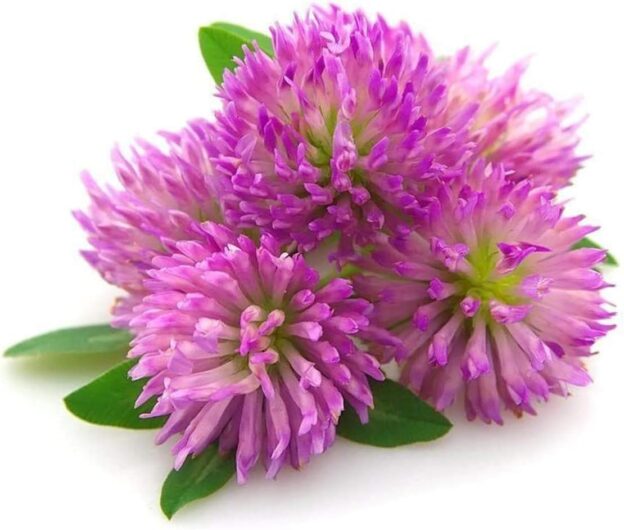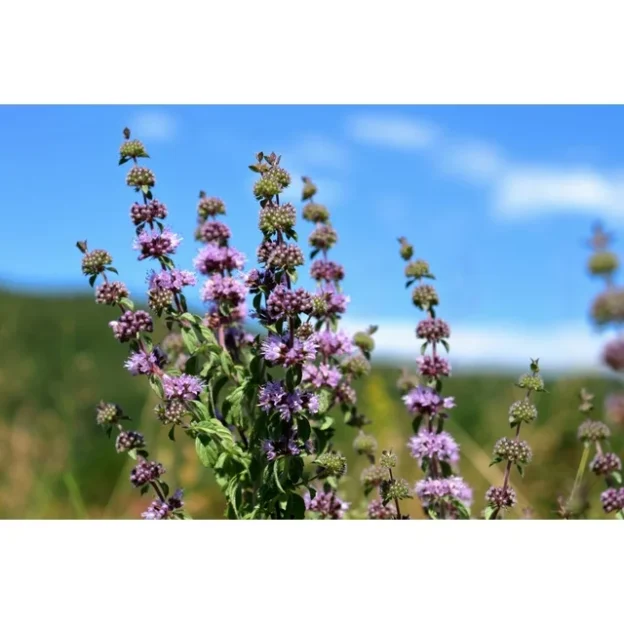Red clover is a herb that has been used for centuries in traditional medicine. It is believed to have many health benefits, including the ability to lower cholesterol, improve circulation, reduce inflammation, and alleviate menopausal symptoms. In recent years, red clover has become increasingly popular, and research has shown that it can be an effective treatment for a wide range of conditions. In this post, we will explore the ancient history of red clover, as well as its modern applications and medical benefits. We will also provide you with a comprehensive guide on how to use it in your daily life to improve your overall health and well-being. So, if you are interested in learning more about this powerful herb, read on!
1. Introduction to the history and significance of red clover
Red clover, scientifically known as Trifolium pratense, is a vibrant and versatile plant that has captured the attention of herbalists, researchers, and health enthusiasts for centuries. Its rich history and numerous medicinal properties have made it a staple in traditional medicine practices around the world.
Native to Europe and Asia, red clover has been used as a medicinal herb since ancient times. The ancient Egyptians, Greeks, and Romans all recognized its therapeutic potential and valued it for its ability to promote overall health and well-being.
In traditional herbal medicine, red clover was commonly used to treat a variety of ailments. It was known for its ability to purify the blood, alleviate respiratory conditions, and ease symptoms of menopause. Its vibrant blossoms were often brewed into teas, tinctures, or made into topical ointments to harness its healing properties.
The significance of red clover extends beyond its historical uses. Modern research has shed light on the numerous bioactive compounds present in this remarkable plant. These compounds, including isoflavones, flavonoids, and coumarins, contribute to its antioxidant, anti-inflammatory, and estrogenic effects.
Today, red clover is widely recognized for its potential benefits in promoting hormonal balance, supporting cardiovascular health, and even reducing the risk of certain cancers. Its versatility is further highlighted by its applications in skin care, as it is believed to improve complexion and promote a youthful appearance.
As we dive deeper into the world of red clover, we will explore its fascinating history, delve into its bioactive components, and uncover the modern applications that make it a powerful herbal remedy. Join us on this journey as we unlock the secrets of red clover and discover how it can enhance our well-being in today’s world.
2. The traditional uses of red clover in ancient remedies
Red clover, with its vibrant pink or purple flowers, has long been celebrated for its uses in ancient remedies. Dating back centuries, this versatile herb has been cherished by various cultures around the world for its medicinal properties. From Europe to Asia, red clover has been an integral part of traditional healing practices.
In ancient Greece, red clover was revered for its ability to support women’s health. It was commonly used to alleviate symptoms of menopause, such as hot flashes and hormonal imbalances. The plant’s phytoestrogen content was believed to mimic the effects of estrogen, providing much-needed relief during this transitional phase of life.
Similarly, in traditional Chinese medicine, red clover was utilized to promote detoxification and improve blood circulation. It was often prescribed to treat respiratory conditions, such as coughs and bronchitis, as well as skin ailments like psoriasis and eczema. The herb was valued for its cooling properties, helping to soothe inflammation and promote overall wellness.
Native American tribes also recognized the healing potential of red clover. They would brew the flowers into infusions, using them as a natural remedy for various conditions. Red clover was commonly employed to address issues related to digestion, inflammation, and respiratory health. Its diuretic properties were also utilized to support kidney function and promote detoxification.
Throughout history, red clover has been regarded as a reliable herbal ally, offering a range of health benefits. Its traditional uses in ancient remedies serve as a testament to its therapeutic potential. Today, as modern science continues to explore the properties of red clover, we can unlock its power and incorporate it into our modern applications of natural medicine.
3. Understanding the key components and compounds in red clover
To truly unlock the power of red clover, it is essential to understand its key components and compounds. This flowering plant is rich in various bioactive compounds that contribute to its medicinal properties and health benefits.
One of the primary compounds found in red clover is isoflavones. These plant-based compounds have gained significant attention for their potential estrogenic effects, which can help alleviate symptoms associated with hormonal imbalances, such as hot flashes and night sweats. Isoflavones, such as genistein and daidzein, have also been studied for their potential anticancer properties and cardiovascular benefits.
Red clover also contains phenolic acids, which are known for their antioxidant and anti-inflammatory properties. These compounds play a crucial role in protecting our cells from oxidative stress and reducing inflammation in the body, thereby promoting overall health and well-being.
Furthermore, red clover is a rich source of essential vitamins and minerals, including vitamin C, calcium, magnesium, and potassium. These nutrients support various bodily functions, such as immune health, bone strength, and cardiovascular function.
Another noteworthy component of red clover is its high content of flavonoids. Flavonoids are plant pigments with potent antioxidant properties that can help neutralize harmful free radicals in the body. These compounds not only protect against oxidative damage but also contribute to the plant’s vibrant red color.
Understanding the key components and compounds in red clover allows us to harness its therapeutic potential and explore its diverse applications. From traditional remedies for skin conditions and respiratory ailments to modern uses in menopausal symptom management and cardiovascular health, red clover continues to captivate researchers and health enthusiasts alike. By delving into its biochemical properties, we can fully appreciate the profound impact this humble plant has on our well-being.
4. The potential health benefits and therapeutic properties of red clover
Red clover, a vibrant and delicate flowering plant, has been revered for centuries for its potential health benefits and therapeutic properties. This humble herb has long been used in ancient remedies and traditional medicine practices, and its popularity continues to grow in modern applications.
One of the key health benefits of red clover is its potential to support hormonal balance. It contains compounds known as isoflavones, which are phytoestrogens that mimic the effects of estrogen in the body. This can be particularly beneficial for women experiencing menopausal symptoms, such as hot flashes, night sweats, and mood swings. Red clover is believed to help alleviate these symptoms by providing a natural source of estrogen-like compounds.
In addition to hormonal balance, red clover has also been associated with cardiovascular health. Studies have suggested that the isoflavones found in red clover may help to improve cholesterol levels by reducing LDL (bad) cholesterol and increasing HDL (good) cholesterol. This can contribute to a healthier heart and lower the risk of cardiovascular diseases.
Furthermore, red clover is believed to possess anti-inflammatory properties, making it a potential ally in combating inflammatory conditions such as arthritis. Its traditional use as a natural remedy for skin conditions, such as eczema and psoriasis, also highlights its potential anti-inflammatory effects when applied topically.
It’s important to note that while red clover shows promise in various health areas, further research is still needed to fully understand its mechanisms and potential benefits. As with any herbal remedy or supplement, it’s advisable to consult with a healthcare professional before incorporating red clover into your routine, especially if you have existing medical conditions or are taking medications.
In conclusion, red clover is a fascinating plant with a long history of traditional use and a growing body of research supporting its potential health benefits. From supporting hormonal balance to promoting cardiovascular health and reducing inflammation, this herb holds great promise in unlocking its therapeutic potential for modern applications.
5. Exploring the modern applications and uses of red clover
Red clover, a flowering plant that has been used for centuries in traditional medicine, is now gaining recognition for its modern applications and uses. This versatile herb has found its way into various industries, from skincare to natural fertility treatments, thanks to its rich nutritional profile and potent bioactive compounds.
In the realm of skincare, red clover extract has become a popular ingredient in creams, lotions, and serums due to its ability to promote a healthy complexion. Its antioxidant properties help combat free radicals, reducing the signs of aging and leaving the skin looking youthful and radiant. Red clover’s anti-inflammatory properties also make it an effective remedy for soothing irritated or sensitive skin conditions.
Beyond skincare, red clover’s potential as a natural remedy for menopausal symptoms has gained significant attention. The isoflavones present in red clover mimic the effects of estrogen in the body, helping to alleviate hot flashes, night sweats, and mood swings. This natural alternative to hormone replacement therapy has become a popular choice for women seeking relief during this transitional phase.
Furthermore, red clover has shown promise in supporting cardiovascular health. Studies have suggested that its isoflavones may help improve arterial health, reduce LDL cholesterol levels, and promote healthy blood pressure levels. These potential benefits make red clover a valuable addition to a heart-healthy lifestyle.
Additionally, red clover’s potential as a natural fertility aid has intrigued many couples struggling to conceive. Its phytoestrogens may help regulate hormone levels and promote a healthy reproductive system in women, while its antioxidant properties may improve sperm quality in men. Though further research is needed, red clover has become a topic of interest for those seeking alternative approaches to fertility support.
In conclusion, red clover’s modern applications and uses extend far beyond its traditional medicinal roots. Its versatility as a skincare ingredient, menopausal symptom alleviator, cardiovascular health supporter, and fertility aid make it a valuable herb with promising benefits. Whether incorporated into daily skincare routines or used as a natural remedy, red clover is undoubtedly unlocking its power for modern applications and providing a bridge between ancient wisdom and contemporary wellness.
6. Red clover in skincare: its role in promoting healthy skin and hair
Red clover, a beautiful and delicate flowering plant, has long been revered for its medicinal properties. However, its benefits extend beyond internal health. In recent years, red clover has gained significant attention in the skincare industry for its remarkable role in promoting healthy skin and hair.
One of the key reasons red clover has become a go-to ingredient in skincare products is its ability to balance hormone levels. This is particularly important for those struggling with hormonal acne or other skin conditions triggered by hormonal imbalances. The plant contains compounds called isoflavones, which mimic the effects of estrogen in the body. By regulating hormonal activity, red clover helps to reduce inflammation and promote a clearer complexion.
Another notable benefit of red clover in skincare is its anti-aging properties. As we age, our skin’s collagen production decreases, leading to the appearance of wrinkles and sagging. Red clover contains antioxidants that help to combat free radicals, which are responsible for damaging the skin’s collagen fibers. By incorporating red clover into your skincare routine, you can help maintain the elasticity and firmness of your skin, reducing the visible signs of aging.
Furthermore, red clover has been found to improve hair health and promote growth. Its high concentration of essential vitamins and minerals nourishes the hair follicles, strengthening them and reducing hair loss. Additionally, red clover helps to balance the scalp’s oil production, preventing dandruff and promoting a healthier environment for hair growth. Whether used in shampoos, conditioners, or hair masks, red clover can revitalize your locks and restore their natural luster.
When choosing skincare products containing red clover, opt for those made from organic and ethically sourced ingredients to ensure the highest quality and effectiveness. Whether you’re battling hormonal acne, seeking anti-aging benefits, or aiming to improve your hair’s condition, unlocking the power of red clover can be a game-changer in your skincare routine. Embrace this ancient remedy’s modern applications and experience the transformative effects it can have on your skin and hair.
7. Red clover’s potential in managing menopausal symptoms
Red clover, a vibrant and delicate flowering plant, has gained significant attention for its potential in managing menopausal symptoms. For centuries, it has been utilized in traditional medicine as a natural remedy for various ailments, and now modern research is shedding light on its remarkable properties.
Menopause, a natural phase in a woman’s life, brings about a range of uncomfortable symptoms that can disrupt daily life. Hot flashes, night sweats, mood swings, and vaginal dryness are just a few of the common challenges women face during this transitional period. While hormone replacement therapy (HRT) has been the conventional treatment option, many women are seeking alternative approaches that are more gentle and plant-based.
This is where red clover steps in as a potential solution. Studies have shown that red clover contains compounds known as isoflavones, such as genistein and daidzein, which act as phytoestrogens. Phytoestrogens are plant-derived compounds that mimic the effects of estrogen in the body, offering a natural alternative to synthetic hormones.
Research suggests that red clover may help alleviate menopausal symptoms by binding to estrogen receptors, thereby modulating the effects of fluctuating hormone levels. This can result in a reduction in hot flashes, improved mood, and relief from vaginal dryness.
Furthermore, red clover has been found to possess anti-inflammatory and antioxidant properties, which can contribute to overall well-being during menopause. These properties may help combat oxidative stress, which is linked to various age-related conditions.
It is important to note that while red clover shows promise in managing menopausal symptoms, further research is still needed to understand its full potential and any potential side effects. Consulting with a healthcare professional before incorporating red clover into your routine is highly recommended, especially if you have pre-existing medical conditions or are taking other medications.
In conclusion, red clover presents an intriguing avenue for managing menopausal symptoms naturally. Its rich history in traditional medicine combined with emerging scientific evidence highlights its potential as a valuable resource for women seeking relief during this transformative phase of life. By unlocking the power of red clover, we can pave the way for a more holistic and personalized approach to menopause management.
8. Red clover and its role in promoting heart health
Red clover, a small perennial herbaceous plant with vibrant pink flowers, has been used for centuries in traditional medicine for its numerous health benefits. Among its many applications, red clover has gained significant attention for its potential role in promoting heart health.
Studies have shown that red clover contains compounds called isoflavones, particularly genistein and daidzein, which have been linked to various cardiovascular benefits. These isoflavones exhibit antioxidant and anti-inflammatory properties, which can help reduce the risk of heart disease.
One of the key ways red clover may contribute to heart health is by improving cholesterol levels. High levels of LDL (low-density lipoprotein) cholesterol, commonly known as “bad” cholesterol, and low levels of HDL (high-density lipoprotein) cholesterol, known as “good” cholesterol, are associated with an increased risk of heart disease. Red clover isoflavones have been found to help regulate cholesterol levels, potentially lowering LDL cholesterol while increasing HDL cholesterol, thus promoting a healthier cardiovascular profile.
Additionally, red clover may also support heart health by improving blood vessel health. The isoflavones in red clover have been shown to improve endothelial function, which is essential for maintaining healthy blood vessel walls. By enhancing endothelial function, red clover can contribute to proper blood flow and reduce the risk of plaque formation and blood clots, both of which can lead to heart problems.
Furthermore, red clover’s potential anti-inflammatory effects may also play a role in supporting heart health. Chronic inflammation is a known risk factor for cardiovascular disease, and red clover’s isoflavones have been found to possess anti-inflammatory properties that can help reduce inflammation in the body.
While red clover shows promise in promoting heart health, it’s important to note that more research is needed to fully understand its mechanisms and confirm its efficacy. As with any herbal remedy, it’s always advisable to consult with a healthcare professional before incorporating red clover into your routine, especially if you have any existing heart conditions or are taking other medications.
In conclusion, red clover holds great potential in unlocking the power of natural remedies for heart health. Its isoflavones, antioxidant properties, cholesterol-regulating effects, and anti-inflammatory benefits make it a fascinating herb to explore in the pursuit of a healthier heart. By incorporating red clover into a well-rounded approach to heart care, you can harness the ancient wisdom of this plant and embrace its potential in modern applications for cardiovascular well-being.
9. How to incorporate red clover into your daily routine
Incorporating red clover into your daily routine is a simple yet powerful way to harness its numerous benefits. Whether you are looking to improve your overall well-being or address specific health concerns, red clover can be a valuable addition to your lifestyle. Here are some easy and effective ways to incorporate red clover into your daily routine:
1. Herbal Tea: One of the most popular and soothing ways to consume red clover is by brewing it into a delicious herbal tea. Simply steep a tablespoon of dried red clover flowers in a cup of hot water for about 10-15 minutes. Strain and enjoy the aromatic infusion. This calming tea can be sipped throughout the day to promote relaxation and support overall health.
2. Supplements: Red clover is available in various supplement forms, including capsules, tablets, and tinctures. These convenient options offer a concentrated dose of red clover’s active compounds, making it easier to incorporate into your daily routine. Always consult with a healthcare professional before starting any new supplement regimen.
3. Culinary Uses: Red clover can be incorporated into your meals in creative ways. The fresh leaves and flowers can be added to salads for a touch of vibrant color and a mild, earthy flavor. You can also infuse red clover into dressings, soups, or stews for an added nutritional boost. Experiment with different recipes to discover your favorite ways to incorporate red clover into your culinary creations.
4. Topical Applications: Red clover extract or oil can be applied topically to address various skin concerns. Its anti-inflammatory properties make it an excellent ingredient in skincare products, helping to soothe irritation and promote a healthy complexion. Look for natural skincare products that contain red clover extract for added skin benefits.
Remember, it’s always important to source high-quality red clover products from reputable suppliers. Whether you choose to consume it as a tea, supplement, or incorporate it into your meals, incorporating red clover into your daily routine can unlock its potential health benefits and enhance your overall well-being.
10. Precautions and considerations when using red clover as a supplement or remedy
While red clover has been used for centuries as a natural remedy, it is essential to take certain precautions and considerations when using it as a supplement or remedy in modern times. Although generally considered safe for most individuals, there are a few things to keep in mind to ensure its optimal and safe use.
Firstly, it is important to consult with a healthcare professional before incorporating red clover into your routine, especially if you have any pre-existing medical conditions or are taking medications. This is particularly crucial for individuals with hormone-sensitive conditions, such as breast or uterine cancer, as red clover contains compounds that can mimic estrogen in the body.
Additionally, pregnant or breastfeeding women should exercise caution when using red clover, as its effects on these specific populations are not yet well-studied. It is best to err on the side of caution and seek medical advice before use.
Furthermore, individuals with blood clotting disorders or those scheduled for surgery should be aware that red clover could potentially interfere with blood clotting. It is advisable to discontinue its use at least two weeks before any scheduled surgical procedures.
It is also worth noting that while red clover is generally safe, some individuals may experience mild side effects, such as headaches, nausea, or rash. If any adverse reactions occur, it is recommended to discontinue use and seek medical advice.
Lastly, when purchasing red clover supplements, it is crucial to choose reputable brands that undergo rigorous testing for quality and purity. Look for products that are certified by third-party organizations to ensure you are getting a reliable and safe supplement.
By considering these precautions and seeking proper guidance, you can unlock the power of red clover safely and effectively, harnessing its potential as a natural remedy for various health concerns.
We hope you found our blog post on unlocking the power of red clover informative and inspiring. Red clover has been used for centuries in ancient remedies, and its benefits are still relevant in modern times. From promoting hormonal balance to improving cardiovascular health, this versatile herb offers a range of therapeutic applications. By incorporating red clover into your wellness routine, you can tap into its numerous health benefits. Whether you choose to consume it as a tea, supplement, or topical treatment, we encourage you to explore the incredible potential of red clover. Embrace the wisdom of ancient remedies and experience the transformative power of this remarkable herb.
——————————





